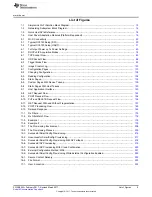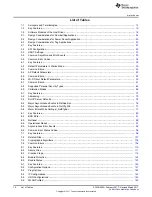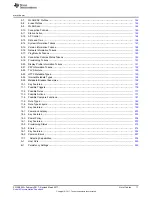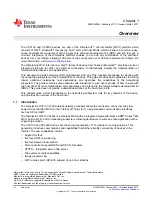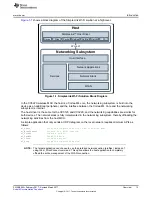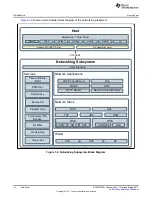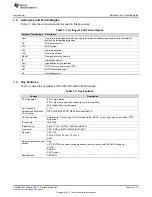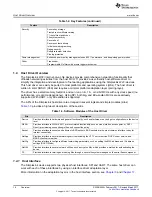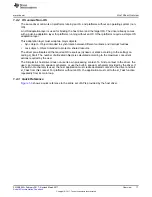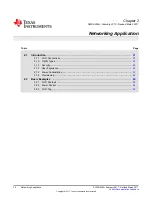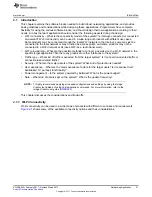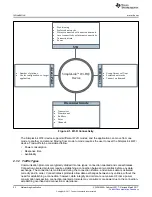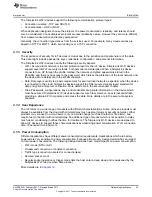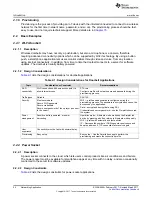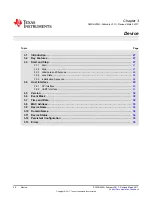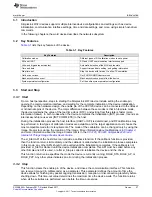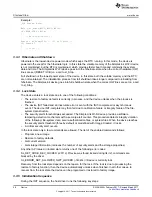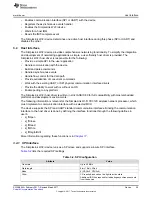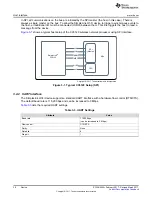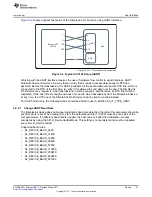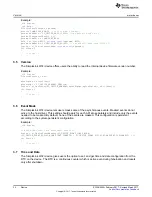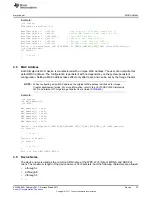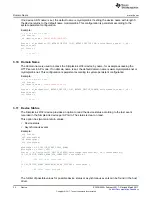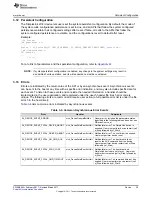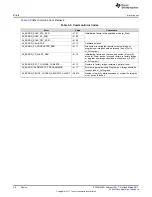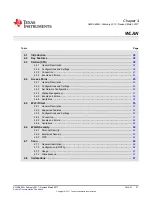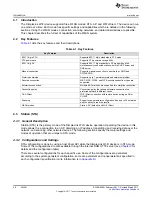
Introduction
23
SWRU455A – February 2017 – Revised March 2017
Copyright © 2017, Texas Instruments Incorporated
Networking Application
The SimpleLink Wi-Fi devices support the following communication protocol types:
•
Connection oriented –TCP and SSL/TLS
•
Connectionless – UDP or RAW
When application designers choose the protocol, the power consumption, reliability, and latency should
also be considered. Connectionless protocols are less reliable by nature. However they are more efficient
from a power consumption and latency perspective.
Generally, the connection type derives from the services used. For example, many cloud services are
based on HTTP or MQTT, which are running over a TCP connection.
2.1.3 Security
The importance of security for IoT devices is crucial due to the sensitive and private nature of the data.
This data might include passwords, keys credentials, configuration, and personal information.
The SimpleLink Wi-Fi devices handle the following security aspects:
•
Wi-Fi: Secured local network is the first protection layer for the IoT device. SimpleLink Wi-Fi devices
support several Wi-Fi security methods, both personal and enterprise. When a SimpleLink device
connects to an AP through the profile method, the network encrypted password is stored in the
SFLASH, and there is no access to the password, which raises the protection of the local network and
the device. More details are in the WLAN chapters.
•
Data: Data layer security is a basic requirement for secured local networks, especially when the device
is connected to the cloud. SimpleLink devices support the SSL (secured socket layer) standard for
data encryption and server verification. More details are in the secure-socket chapter.
•
Files: Passwords, configurations, keys, and credentials are private information on the device which
must be secured. SimpleLink Wi-Fi devices support secure file systems on an external serial flash,
providing a simple API to organize and access the data. More details are in the secure-file system
chapters.
2.1.4 User Experience
The IoT refers to a wide range of products with different characterizations. Some of these products must
always be available from the cloud with minimal delay (such as smart plugs or security cameras). Other
products may connect to a cloud server only on a state change (such as doorbell or fire alarm), and
require fast connection with minimal delay. An additional type of product which is not sensitive to delay
(such as air conditioning) notifies the time for treatment. The SimpleLink Wi-Fi devices are designed to
allow IoT devices to support those characterizations by optimizing power consumption, Wi-Fi connection
time, IP acquired time, and more.
2.1.5 Power Consumption
Different applications have different power consumption requirements. Applications which are battery
powered are very sensitive to power consumption, because almost every design decision has an impact
on total power consumption. The following design decisions have major impacts on power consumption.
•
Wi-Fi mode (STA or AP)
•
On-demand connection or constant connection
•
Traffic type (connection oriented or connectionless)
•
Secured socket or not
•
Regular socket operation or trigger mode (lets the host enter a deep sleep and is awakened by the
SimpleLink Wi-Fi device when data arrives)
More details are in
.

